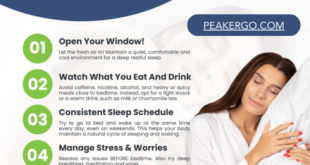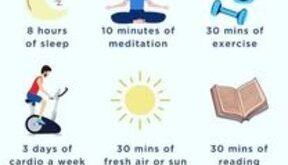Related Articles
Fitness for All Ages: Tailoring Your Workout for Every Stage of Life
Staying active is crucial for maintaining health and well-being at any age. However, as our bodies evolve over time, so too should our fitness routines. From childhood to older adulthood, exercise needs, abilities, and goals change. Tailoring your workout to match your age and physical condition helps ensure that you stay fit, injury-free, and able to enjoy the benefits of an active lifestyle at every stage of life.
1. Childhood and Adolescence (Ages 5-18)
During these formative years, physical activity is essential for promoting healthy growth, improving motor skills, and building a strong foundation for lifelong fitness. For kids and teens, exercise should be fun, engaging, and involve a variety of activities.
Recommended Activities:
- Play-Based Exercise: Encourage participation in sports like soccer, basketball, swimming, or dance, which improve coordination and social skills.
- Strength and Flexibility: Activities like gymnastics or martial arts build flexibility and muscular strength.
- Aerobic Activities: Running, cycling, or active games improve cardiovascular health and endurance.
Key Focus:
- Promote a love for physical activity.
- Encourage participation in team sports or group activities to develop social and motor skills.
- Ensure balance between exercise, schoolwork, and rest.
2. Young Adulthood (Ages 18-35)
In young adulthood, fitness goals often revolve around building strength, endurance, and maintaining a healthy body weight. This stage of life is typically characterized by higher energy levels and a greater ability to recover from workouts.
Recommended Activities:
- Strength Training: Weightlifting, bodyweight exercises, or resistance training builds muscle mass, bone density, and boosts metabolism.
- Cardio Workouts: Activities like running, cycling, HIIT (high-intensity interval training), and swimming improve cardiovascular fitness and stamina.
- Flexibility and Mobility: Incorporate yoga or stretching to maintain flexibility and prevent injuries.
Key Focus:
- Combine strength training and cardiovascular exercises for overall fitness.
- Focus on injury prevention by incorporating warm-ups, cool-downs, and mobility exercises.
- Maintain a consistent routine to establish long-term fitness habits.
3. Middle Adulthood (Ages 35-50)
As you approach middle age, maintaining muscle mass, flexibility, and cardiovascular health becomes more important. Fitness routines should evolve to account for potential lifestyle changes, such as increased job or family responsibilities, and the natural slowing of metabolism.
Recommended Activities:
- Strength and Resistance Training: Continue to build and preserve muscle mass with weightlifting, resistance bands, or bodyweight exercises.
- Moderate Cardio: Brisk walking, cycling, swimming, or jogging improve heart health without putting too much stress on joints.
- Flexibility and Balance Exercises: Yoga, Pilates, or tai chi helps maintain flexibility, balance, and core strength, which become increasingly important with age.
Key Focus:
- Prioritize consistency over intensity to reduce the risk of injury.
- Address areas like posture and joint health, which may start to decline.
- Manage stress with activities that promote mental well-being, such as yoga or meditation.
4. Late Adulthood (Ages 50-65)
During this period, maintaining physical function, joint health, and overall mobility becomes a top priority. It’s important to stay active to prevent muscle loss, improve cardiovascular health, and maintain flexibility. Fitness routines should focus on low-impact exercises that protect the joints while still providing physical benefits.
Recommended Activities:
- Low-Impact Strength Training: Light weightlifting, resistance band exercises, or bodyweight exercises help maintain muscle mass and bone density.
- Low-Impact Cardio: Walking, swimming, cycling, and elliptical training are gentle on the joints while improving heart health.
- Balance and Core Strength: Yoga, Pilates, or balance exercises reduce the risk of falls and improve overall stability.
Key Focus:
- Focus on maintaining mobility, flexibility, and balance to support daily activities.
- Incorporate exercises that protect joint health and reduce the risk of osteoporosis.
- Use moderate intensity to stay active without overexertion.
5. Senior Years (Ages 65 and Older)
As people enter their senior years, fitness becomes crucial for maintaining independence, reducing the risk of chronic diseases, and improving quality of life. Workouts should focus on maintaining functional strength, flexibility, and balance while being gentle on the body.
Recommended Activities:
- Gentle Strength Training: Use light weights, resistance bands, or water-based exercises to maintain muscle strength and bone health.
- Low-Impact Cardio: Walking, swimming, or stationary cycling keep the heart healthy while being easy on the joints.
- Flexibility and Balance: Chair yoga, stretching, or tai chi improve mobility, flexibility, and prevent falls.
Key Focus:
- Prioritize safety by avoiding high-impact or overly strenuous activities.
- Focus on maintaining independence and mobility for daily living.
- Engage in group exercise classes or social physical activities to promote mental and emotional well-being.
Conclusion
Fitness is a lifelong journey that evolves as we age. By tailoring your workout to the specific needs of each stage of life, you can maintain physical health, prevent injuries, and promote overall well-being. Whether you’re a child learning to love movement or a senior maintaining mobility, exercise plays an essential role in enhancing quality of life. The key is to adjust your fitness routine to fit your body’s changing needs, ensuring that you stay strong, active, and healthy at every age.



